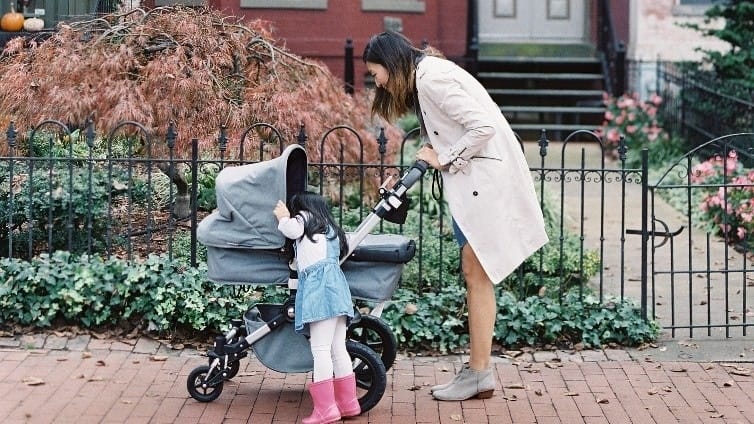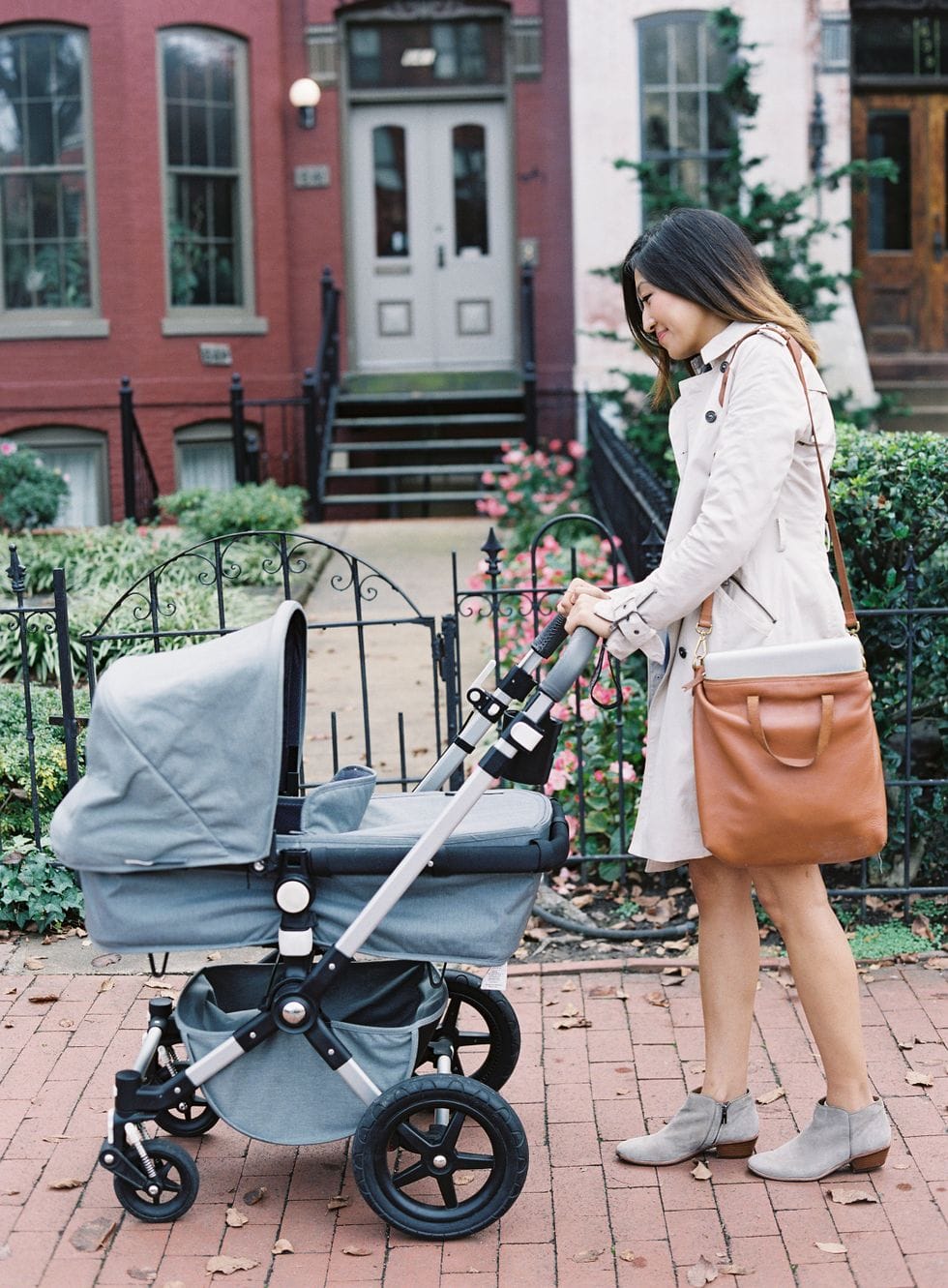Bringing baby to day care? 8 ways to ease the transition & feel good about your choice

4. Make drop offs short and sweet starting from the first day.
Table of Contents
I’m a mother who has also worked in a day care. I know how hard it can be on parents to leave baby there for the first time.
Still, there are time-tested tricks that can help ease the transition of starting your child in childcare. Some may work better than others, depending on the age of your child, but all are strategies that will help make that drop-off a little less painful.
How to transition baby to daycare: 8 tips
1. Do a school visit.
All the childcare facilities I know welcome families to come in and tour their school.
You can go in and get a feel for the staff, school, location, families, curriculum, procedures and standards that make this school what it is. I have had several tours come in my classroom, where the child was able to come in, see the room, meet teachers (and some friendly students) and really feel comfortable right away.
A lot of your decision depends on your gut instinct. You might have to visit a few schools before you pick the right one, but that is what is going to make the transition the easiest. If you are feeling good and at ease about this new setting, then your child will pick up on that and feel the same way.
2. Prepare children for change.

So you have finally made the decision of what school to attend and you’re preparing yourself mentally for that first day.
Well, as anxious as you may be, your child will be that way too! Even infants can pick up on anxiety and know when something is a little off. While you are aware that you can mentally prepare yourself, your children may not be able to do it and definitely cannot do it on their own.
This is where you come in and start talking up the new school: Show pictures of it (check to see if there is a Facebook page—a lot of places post school projects, community events or pictures of the classroom) and talk to your child about what they are most excited about or what might be keeping them from getting excited. Take your child shopping for new clothes, backpack, lunch box or sleeping bag to help them feel ownership and a part of this process.
3. Find something that will give your child a sense of security.
There is a great book called The Kissing Hand by Audrey Penn that is a staple for most preschools and elementary schools to help ease the anxiety of a being away from mom and dad. In the book, Chester Raccoon’s mom tells him the story about the kissing hand and how when she kisses his hand, he will always have her with him. So whenever he misses her, he can put his palm towards his cheek and think of her. Have something that will help your child get over the hump of a long day.
Keep a family picture in their backpack or lunch bag. Or have the teacher tape one to their cubby so they can see it all day. Or they might have a special stuffed animal or blanket they can use at nap time that will help them to feel safe and secure. Whatever it is, talk to the teacher about it and I’m sure the teacher will help with keeping this item in a safe place and allowing the child to have it at different parts throughout the day.
4. Don’t linger.
It sounds harder to do than it actually is, but once you get into this habit, it is hard to break.
Make drop-offs short and sweet starting from the first day.
I know it’s hard, especially on that first day when you have never done this before. Or when you have to leave your child screaming and crying and you feel like there’s no one else on Earth who can calm them except for you. Rest assured, teachers are trained to help ease this transition. Try to limit your drop-off to no more than 10 minutes. Otherwise, the longer you stay, the more your child will think that you are able to hang out in the classroom every day. And before you know it, you’re sitting at circle time with your child so they don’t get upset when you leave. Doing this does not calm your child; it will only build up their anxiety for that moment when you do have to leave.
5. Communicate with teachers.

It’s always nice when a parent asks how their child’s day was or asks about things they can do at home to help try to solve a problem their child is having at school. It shows that you are there and willing to be an integral part of helping your child to grow up.
Some children act completely different in a group setting than they do at home. Your 3-year-old son who loves to jump up and down on the couch and create obstacle courses throughout the house, and can be a little rambunctious at times, may actually sit and listen to a story during circle time. Or your daughter who loves to talk and tell you about everything that goes on during the day may be very shy and not participate during the daily routines.
Even if you think you know your child, getting insight from the teacher on their interactions and behavior may surprise you.
6. Communicate with your children.
If your children are preschool age or older, talk to them about their day and not the question “What did you do today?” because most of the time the answer will be “Nothing” or “I played,” and those answers really don’t provide you with much feedback. Instead, ask “What was the best part of the day?” or “What happened today that made you happy to be at school?”
These questions will give you more feedback and a better sense of understanding. Most schools send home calendars or daily activities, and you can base your conversations on that. “Oh, I see you learned about firefighters this week! What is something new you learned?” Children love sharing about their day and all of the things that they did. If your child does not talk yet, talk to them anyway! Make up your own conversation, sing a song together or read a book about something they are learning that week.
7. Show interest in what your child is interested in.

This goes hand in hand with communicating with your child daily. If they start to show an interest in animals, find some animal books or puzzles or apps that can teach you more about animals.
If they want to start writing and drawing more, stock up on paper, crayons, markers and pencils. If you start incorporating these into home activities, your child will go back to school and share this with their teacher, which always will make the teacher feel accomplished that they were able to connect with a student! The more they open up about their favorite activity, the more excited they are to go to school and share what they learned!
8. Foster independence.
As your children get older, one of two things may happen. You may love the fact that they are getting older and can do more for themselves, or you may see your baby growing up too quickly and inhibit them from gaining the skills that make them independent.
When children start showing signs of independence, go with it. If they want to start eating with utensils or start to dress themselves, show them how to do it. Encourage them to try and do it on their own. Same things go for the older children: Give them some room to grow. The minute that you start doing things for your preschool-aged child is the minute you start giving in and keeping them from trying things on their own. This sense of independence is just what children need; otherwise they will feel like they can’t do something. The younger they learn that they can try something and it’s okay to make mistakes, help them to grow as a person. And when they try something and do it correctly, their self-esteem rises and feel that they can take on any new challenge.
Help them to be that child who feels like a leader and can do anything they set their mind to.
A version of this story was originally published on January 16, 2017. It has been updated.


































